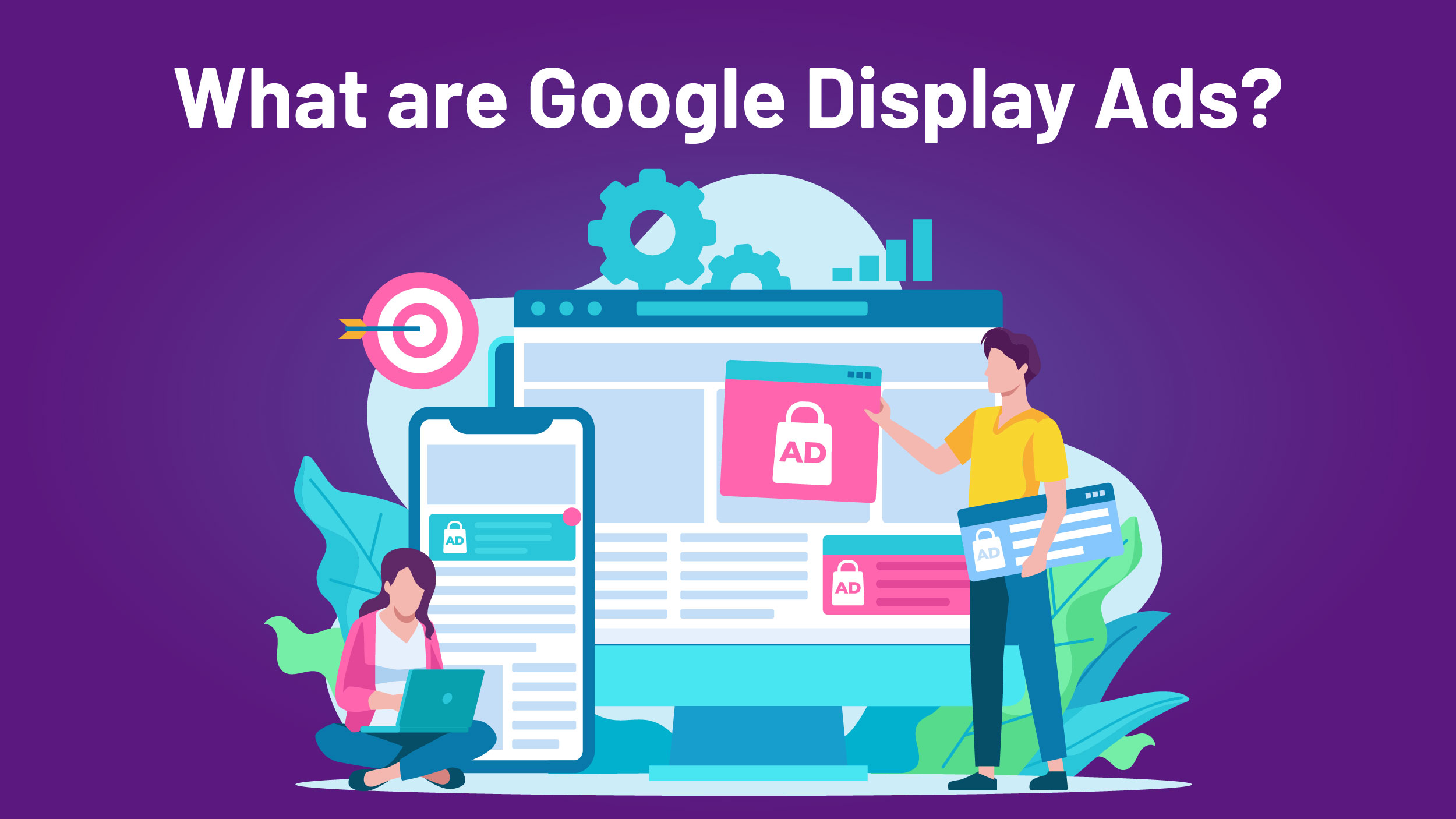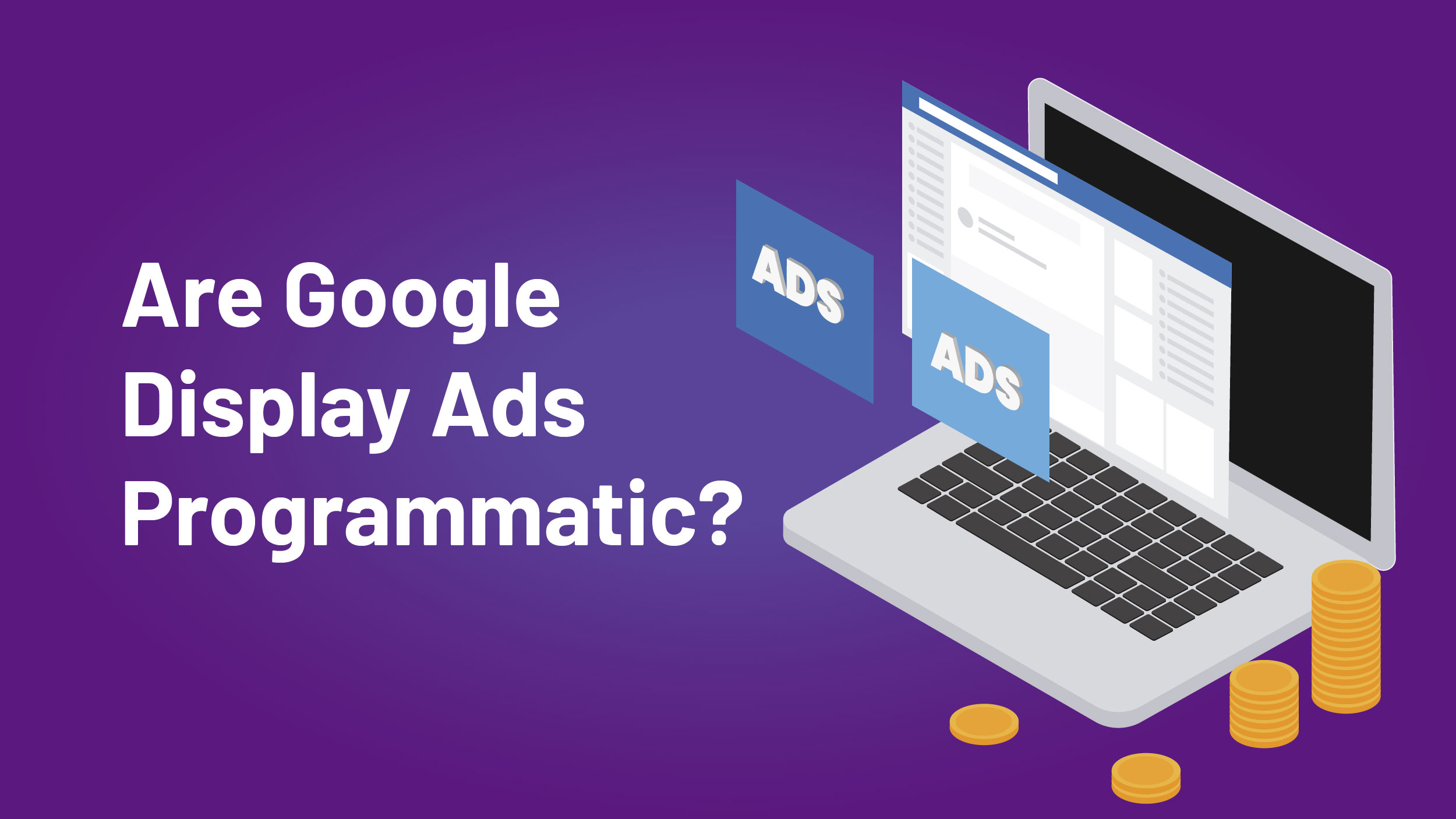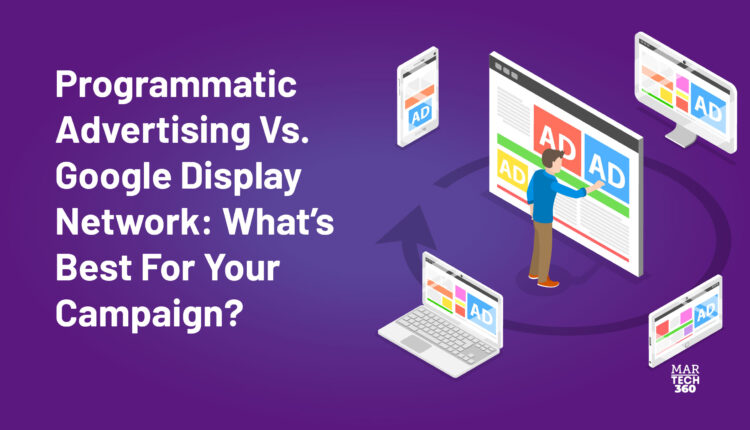Tomato, tom-ah-to. Potato, po-tah-to, Google Display Network, programmatic ad buying. It’s easy to think they’re all cut from the same cloth, right?
Not exactly! Many folks mistakenly assume these platforms are interchangeable. While both share the common objective of placing your message in front of a specific audience, they each bring their own set of advantages and disadvantages.
When deciding on the right platform for your digital ads, it’s crucial to grasp the fundamental distinctions between these options and how they can impact your campaigns for better or worse. Here’s a breakdown of what you should keep in mind when comparing Google Display Network and programmatic advertising.
What are Programmatic Ads?
Programmatic ads are online advertisements that advertisers buy and place using software rather than manual methods. Advertisers can use programmatic ad-buying software to automate the purchase of ad space, the selection of ideal ad locations, the targeting of ads, and other tasks. This is in contrast to the traditional methods of negotiating with human representatives and requesting individual ad placements.
Online advertising is synonymous with programmatic advertising and the Google Display Network (GDN). According to Statista, marketers in the United States spent more than US$356 billion on digital advertising in 2020, with this figure expected to rise to US$460 billion by 2024.
What are Google Display Ads?
 Display ads are digital advertisements that are visually appealing. These ads can include images, video, text, and audio, and they can be displayed in a variety of formats, such as banner ads, video ads, and native advertising. Advertisers can use networks like the Google Display Network to place display ads on websites. On search engine results pages, the term display is frequently used to distinguish image and video-based ads from text-based ads (SERPs). Display ads appear as users navigate through various websites, whereas search ads appear after users enter search terms into search engines.
Display ads are digital advertisements that are visually appealing. These ads can include images, video, text, and audio, and they can be displayed in a variety of formats, such as banner ads, video ads, and native advertising. Advertisers can use networks like the Google Display Network to place display ads on websites. On search engine results pages, the term display is frequently used to distinguish image and video-based ads from text-based ads (SERPs). Display ads appear as users navigate through various websites, whereas search ads appear after users enter search terms into search engines.
Are Google Display Ads Programmatic?
 Yes, Google Display ads can be programmatic. Programmatic advertising is a way to buy and sell digital advertising space using software to automate the process. This allows advertisers to target their ads to specific audiences and publishers to sell their ad space more efficiently.
Yes, Google Display ads can be programmatic. Programmatic advertising is a way to buy and sell digital advertising space using software to automate the process. This allows advertisers to target their ads to specific audiences and publishers to sell their ad space more efficiently.
Google Display ads can be bought and sold programmatically through a variety of platforms, including Google’s own Display & Video 360 platform. Advertisers can use these platforms to create campaigns, target their audiences, and set their budgets. Publishers can use these platforms to sell their ad space and earn revenue.
Programmatic advertising has a number of advantages over traditional advertising methods, such as direct buying and selling. It is more efficient, scalable, and targeted. It also allows advertisers to reach a wider audience and publishers to earn more revenue from their ad space.
So Why Choose Either of Them?
The Google Display Network is similar to programmatic advertising in several ways. Both systems use display advertising to reach a specific audience and are auction-based. You can reach mobile users using either process, and both platforms have basic targeting options where you can specify demographics, interests, and behaviors.
However, there are a few significant differences mentioned here:
| Google Display Network | Programmatic | |
| Pricing | GDN does not necessitate a substantial financial plan as programmatic advertising. It uses the following payment models, making it a less expensive option.
● Cost per click (CPC) ● Cost per mille (CPM) ● Cost per action (CPA) |
To reach a larger audience, programmatic advertising only employs the CPM model and employs real-time bidding in a vendor-neutral environment. |
| Formatting | GDN doesn’t give you much more than image ads. GDN can only be used for video, audio, or TV-based ads limited only to YouTube and its app. | Video ads can be included in programmatic advertising, and the scope of your campaign can be set to include or exclude YouTube. |
| Targeting Audience | Google Ads only uses data that it collects itself to target users. | Programmatic goes one step further by allowing the use of data from third-party providers, also known as 3rd party data. These are typically gathered by specialized DMPs (Data Management Platforms) |
| Data Analytics | Google Ads allows you to report campaign statistics with a delay ranging from a few hours to about a day for some metrics. | The reporting of programmatic campaign results is available almost immediately. Monitoring the effectiveness of a programmatic campaign has a significant advantage in this case – it allows for more effective activity optimization. |
| Settlement Models | Google offers several settlement models such as
● CPM (Cost Per Mille) – a predetermined fee for every thousand ad views ● CPC (Cost Per Click) –a predefined fee for each time a user clicks on your ad ● CPA (Cost Per Action) – You pay for each preset action taken by the user, and the action is entirely up to you – it could be a product purchase or subscription to your newsletter. |
A settlement is only done in the CPM model in programmatic advertising, but it is calculated slightly differently: CPM = (expenses/views) x 1000. This is because each view can have a different rate since you bid for each of them separately. |
| Entry Threshold | There is no advertising issue with Google Ads – the platform allows you to buy advertising for any amount of money, and the costs can be scaled to accommodate your needs. | Programmatic advertising, on the other hand, has the potential to display your ad, but you must frequently meet the minimum monthly expenses on your chosen platform. |
Both methods are effective, but programmatic advertising has the advantage in terms of reach, ad variety, and the number of deal-making options. However, launching ad campaigns with programmatic advertising can be more expensive than with GDN and is a riskier bet for those unfamiliar with the space. If you’re just getting started with digital advertising, you might want to limit your ad campaigns to GDN until you find your footing.
Final Verdict
While programmatic advertising remains the top choice when budget constraints are not an issue, it offers heightened control, broader reach, and enhanced targeting capabilities.
However, it’s essential to note that the Google Display Network (GDN) isn’t a subpar alternative. Particularly when facing budget limitations, GDN provides an excellent entry point with lower costs.
Regardless of your selection between these options, the paramount factor is the clarity of your message, the quality of your imagery or video content, and the robustness of your advertising strategy.


Comments are closed.